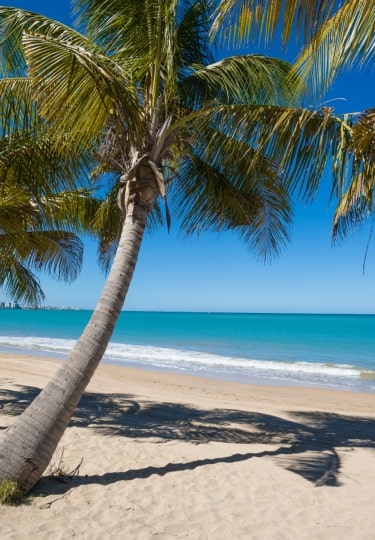With warm waters year-round, and a wide range of waves, there are plenty of options for great surfing in Puerto Rico.
The best surfing is undoubtedly in Rincón, three hours west of San Juan, where a statue of a surfer decorates the town center. Nearby Aguadilla has five miles of north-west beachfront, and created the Caribbean’s first World Surfing Reserve in 2018.
Also on the north-west coast, but slightly closer to San Juan, Isabela has surfing for all levels of experience, including those on the pro circuit. Around San Juan, surfers don’t have to go far to find beaches in Carolina.
Here is our pick of the 11 best spots for surfing in Puerto Rico.
Surfer’s Beach, Aguadilla
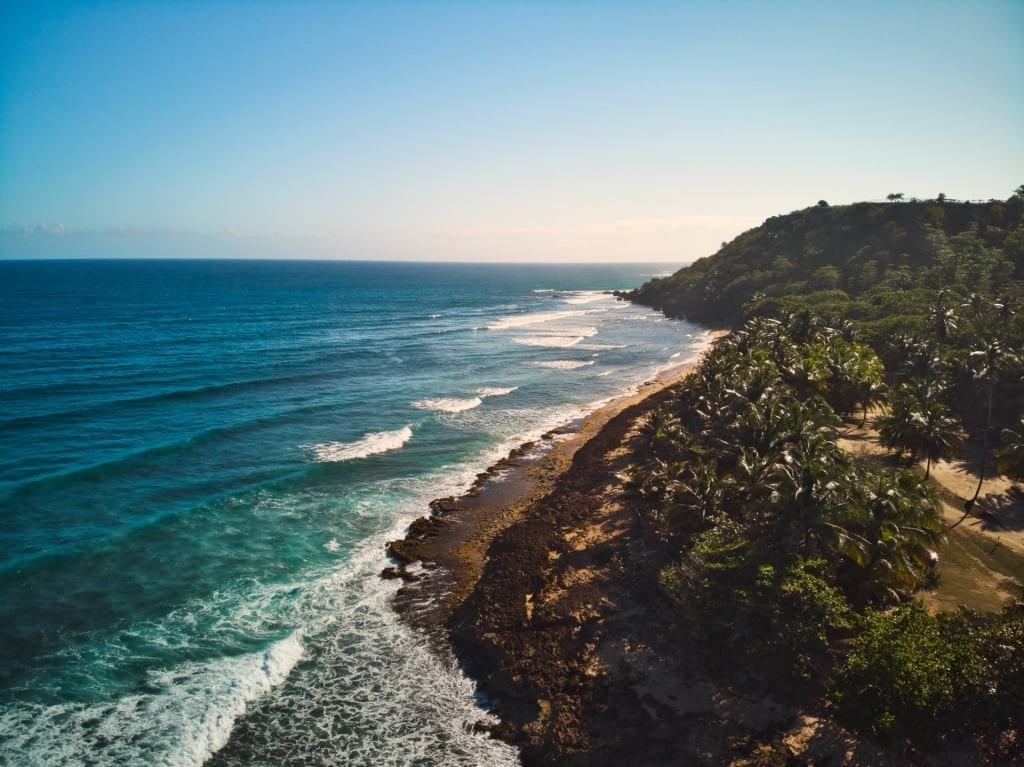
Surfer’s Beach, Aguadilla
Facing north, this beach is exposed to the winds that bring the best surf to the island. An exposed point helps the ways break nicely for big surf. In winter, there are consistent long rights, and busy weekend line-ups.
In those conditions, it’s a place for experienced surfers. On calmer days, long, slow waves breaking over the reef make this a great beach for beginners, with the coarse sand keeping most casual visitors away.
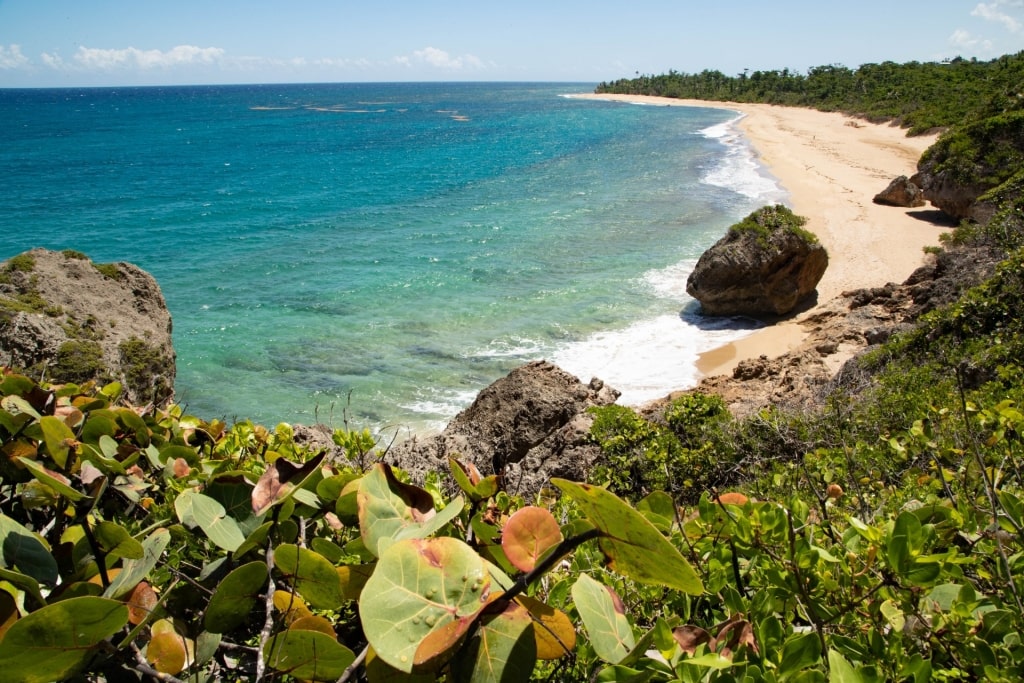
Survival Beach, Aguadilla
While you’re here, you will want to enjoy the 45-minute hike east around the point to Survival Beach. The rocks require good footwear, but the reward is one of the most picturesque views on Puerto Rico.
The best place for advice, and board rental, here is Surf Zone, opposite the museum for the former Ramey U.S. Air Force Base. That airbase is now the Rafael Hernandez International Airport.
Isla Verde, San Juan
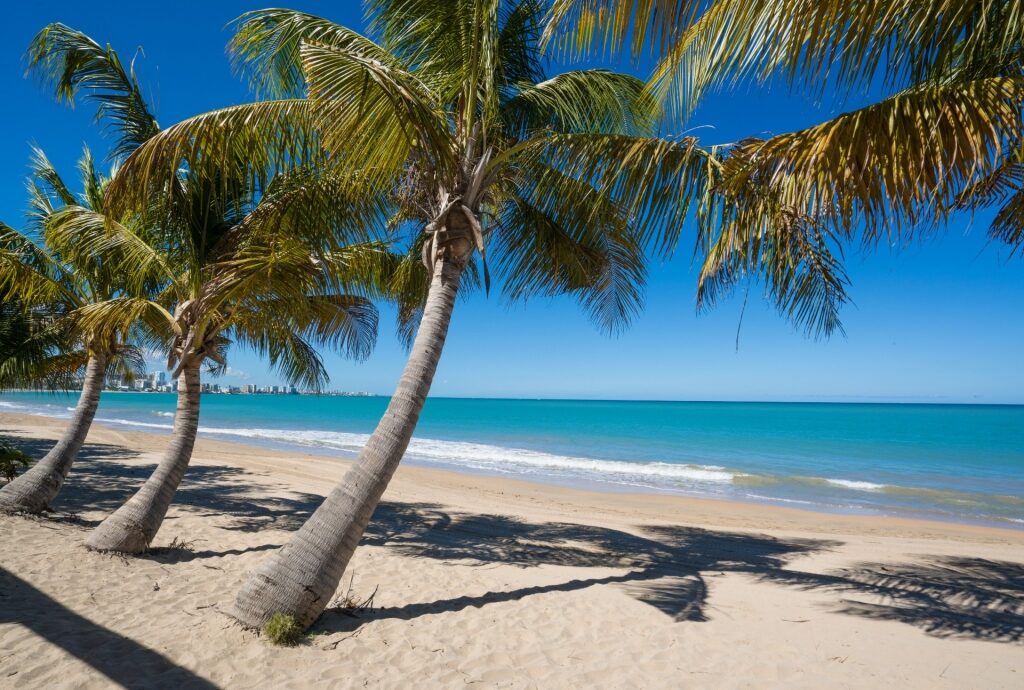
Isla Verde, San Juan
Isla Verde Beach is San Juan’s most popular city beach. Less than a 15-minute drive from the capital, you can be enjoying golden sands, and warm, turquoise waters.
Visiting here is one of the best things to do in Puerto Rico with kids, as the beach is very calm, sheltered by an offshore reef. However, one notable exception is the stretch known as Pine Grove Surfing Beach.
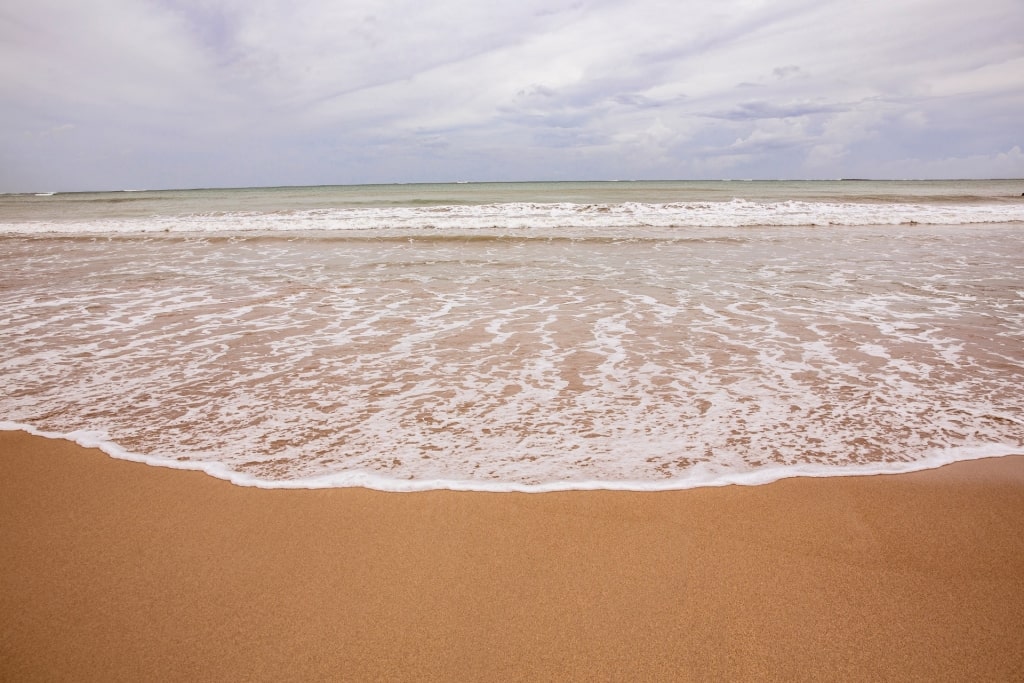
Pine Grove Surfing Beach, San Juan
With deeper waters, and less reef exposure, you’ll find a typical, gentle beach break that’s perfect for surf beginners, or children. There is a surf shack to rent a board, or sign up for lessons.
The waves near here are also popular with paddle-boarders and kayakers. The rest of Isla Verde is just a lovely place to swim, or sunbathe while taking in the tropical setting.
The powdery white sand is lined with palm trees, and it’s easy to rent a sun-lounger or sunshade. There is also no shortage of good restaurants, bars, and other facilities along its three-mile length.
Playa El Escambrón, San Juan

Playa El Escambrón, San Juan
Even closer to central San Juan than Isla Verde, Playa El Escambrón is one of the best beaches in Puerto Rico. Shaded by palm trees, and sheltered by a close-in reef, the idyllic urban beach is like a natural swimming pool.
While that calmness does not make it ideal for surfing, an exposed reef break offshore on the western side regularly builds into something interesting. While at its best in fall and winter, it can be a pleasant surprise at any time of the year.
El Escambrón is also known as Playa 8, and the break is therefore called “La Ocho”. It’s popular with long boarders when on form, and kite-surfers also like its challenges.

Playa El Escambrón, San Juan
Among those challenges are the presence of rocks. It’s therefore even more vital than usual to seek the help and advice of local surfers.
La 8 Surf Shop near the beach is a good place for advice and to rent a board. You’ll find it on the south side of Luis Muñoz Rivera Park.
At the east side of El Escambrón, there is good snorkeling among the coral. Heading even further east on foot, you’ll come to the sister beach at Bateria El Escambron, Playa 9, very popular with snorkel tours.
Read: Best Things to Do in San Juan, Puerto Rico
Crash Boat Beach, Aguadilla
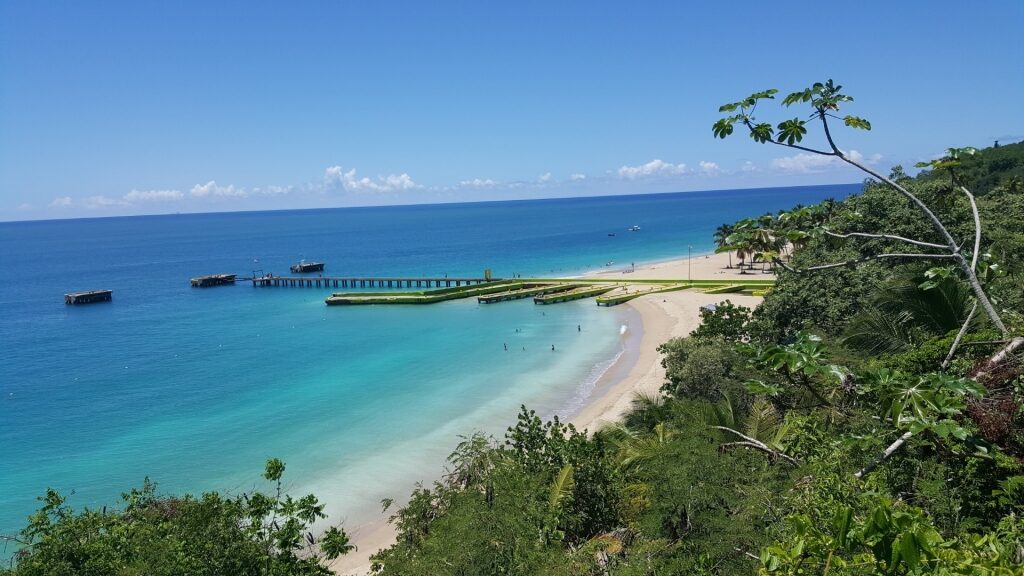
Crash Boat Beach, Aguadilla
In contrast to Surfers Beach, Crash Boat Beach faces south-west. A large pier at its center, popular for fishing, adds interest to the swell, producing a challenging ride for the experienced surfer.
In summer, it’s perfect for beginners and the beach also comes alive with swimmers and snorkelers. Tropical vegetation covers the back of the beach, and the sea adds its own turquoise coloring to the picturesque setting.
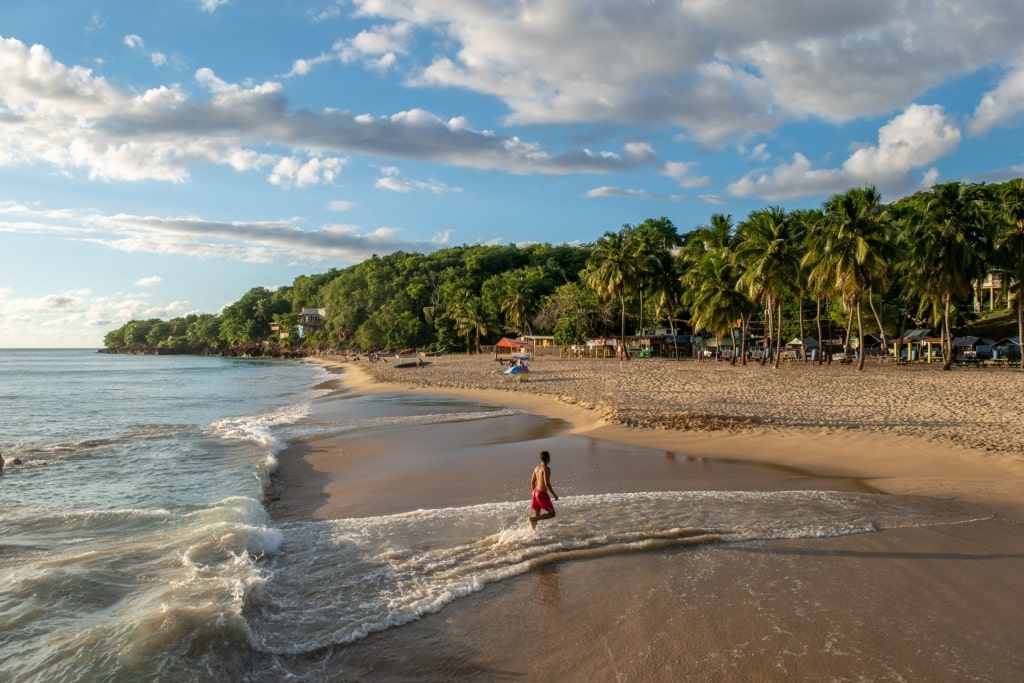
Crash Boat Beach, Aguadilla
On weekends, you’ll hear lots of music, and enjoy food stalls, and bars galore. During the week, or in the cooler months, its natural beauty is more to the fore.
The beach’s name comes from the USAF rescue boats serving Ramey Air Force Base that were once stationed here. After the pier was built for them, a build up of sand formed the beach.
Domes Beach, Rincón

Domes Beach, Rincón
Named for the dome of a decommissioned nuclear plant nearby, that’s the landmark to look out for to find this lovely beach, a couple of hours’ drive from San Juan. It’s in the far west of Puerto Rico, meaning it’s exposed to some great wave action.
In winter, it’s a venue for international surfing competitions. In spring, and summer, it’s more beginner-friendly, but can be relatively crowded on good surf days.

Sea urchins
There is a rocky sea floor, lots of sea urchins, and no lifeguards, so take care. The tight bay can also create a messy impact zone with waves breaking into each other.
Those warnings aside, there is a reason this beach offers some of the best surfing in Puerto Rico. It’s a reliable place for some action when other beaches are only producing ankle slappers.
While you’re here, don’t miss visiting the former power station, one of the first in Latin America. Its teal-colored dome now holds a fascinating science center showcasing that history.

Punta Higüero Lighthouse, Rincón
Another landmark is Punta Higüero Lighthouse, dating to 1892, from which you can take in good views of Domes. That closeness means many people also call it “Lighthouse Beach”.
Read: Best Time to Visit Puerto Rico
Maria’s Beach, Rincón

Maria’s Beach, Rincón
Maria’s Beach is named for the late Dona Maria Garcia, who sold cold sodas, and home-made paella to the surfers here. Formerly known as Rincón Point, it was the first beach—paired with Domes—to hold a surfing event for network television: the 1968 World Surfing Championship.
The beach still helps host the pro surfing circuit in winter, with powerful waves breaking over the shallow reef. In summer, it’s a much more welcoming place for amateurs and complete beginners.
As one of the best surfing spots in Puerto Rico, it can become crowded. However, that’s a relative concept when there is so much choice around the island.
There are two good bars, and you can rent boards or have surfing lessons. The wide beach is in a beautiful natural setting, with shady palm trees, so is equally popular for sunbathing or swimming.

Humpback whale
From January through late March, humpback whales migrate south along the coast here to their Caribbean breeding and calving grounds. This whole western coastline is also a good place to enjoy spectacular sunsets.
Tres Palmas Beach, Rincón

Tres Palmas Beach, Rincón
Tres Palmas is also known as Steps Beach (“Playa Escalera”) for the forlorn set of concrete steps sitting isolated on the foreshore. They make an irresistible photo opportunity for many visitors when the tide is out.
As one of the best surf spots in Puerto Rico, if not the Caribbean, the beach is often crowded in winter. You need to be a strong surfer to tackle the fast, hollow barrels breaking over that reef, and strong rip tides.
Waves of over 20 feet are common, with a break sometimes needing a swim of a mile—or a drop-in ride. From April onward, the seas calm down to make this beach popular with snorkelers and swimmers.

Tres Palmas Marine Reserve, Rincón
At any time, it’s a lovely beach to just sit, and take in the action offshore, or the view. This whole area is now protected in the Tres Palmas Marine Reserve, partly established to protect the elkhorn coral in the Caribbean reef.
Los Tubos, Luquillo
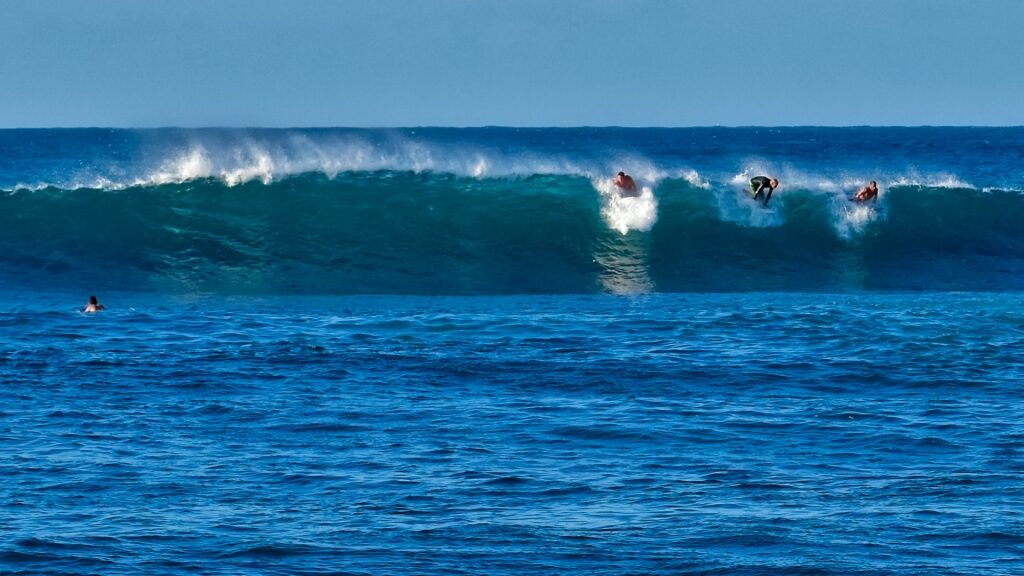
Los Tubos, Luquillo
This north coast beach faces north-west, perfect for capturing big waves. It’s an isolated spot, only 30 minutes west of San Juan, popular with local surfers when the north-east trade winds hit.
The beach takes its name from the tubular waves that form offshore, breaking both mostly left, and also right. While it can get busy, an erratic build—and break—disperses the crowd so there is always room to have some fun.
There are usually great surfing conditions from late fall through early spring—with waves over 12 feet. With no local surf shops, you’ll need to bring your own shortboard or bodyboard to tackle those barrels.
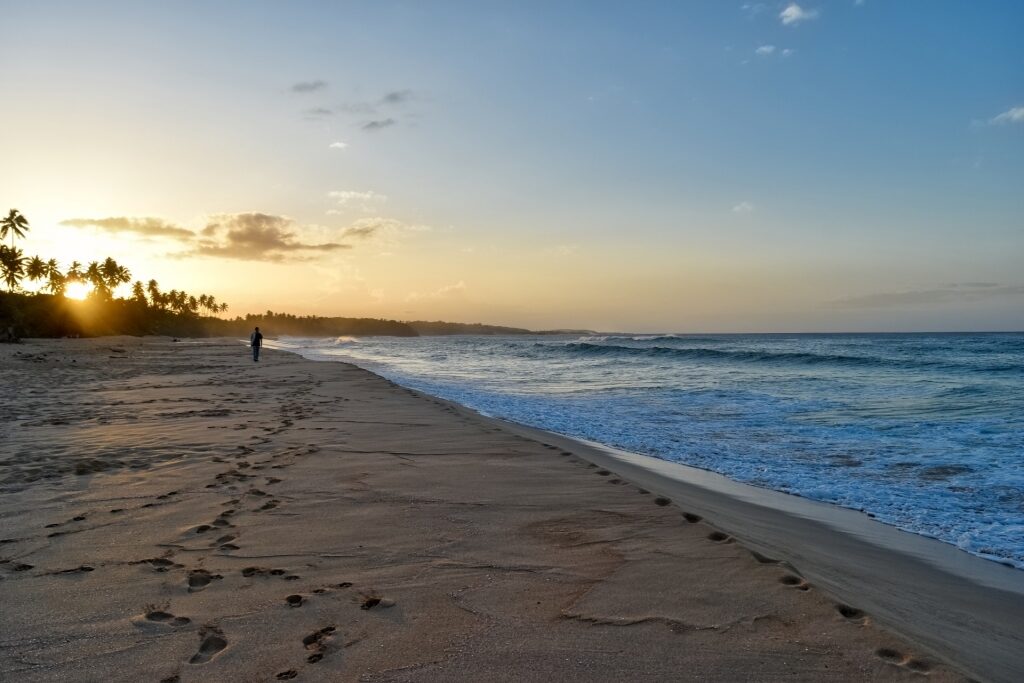
Los Tubos, Luquillo
Lined with palms, Los Tubos is a photogenic spot. It’s a very long, curving beach, broken with rocks at the center.
There is an active coral restoration project here, and you may also spot sea turtles. This long beach also lends itself well to sunbathing or sunset strolls.
Read: Best Islands for Surfing in the Caribbean
La Pared, Luquillo
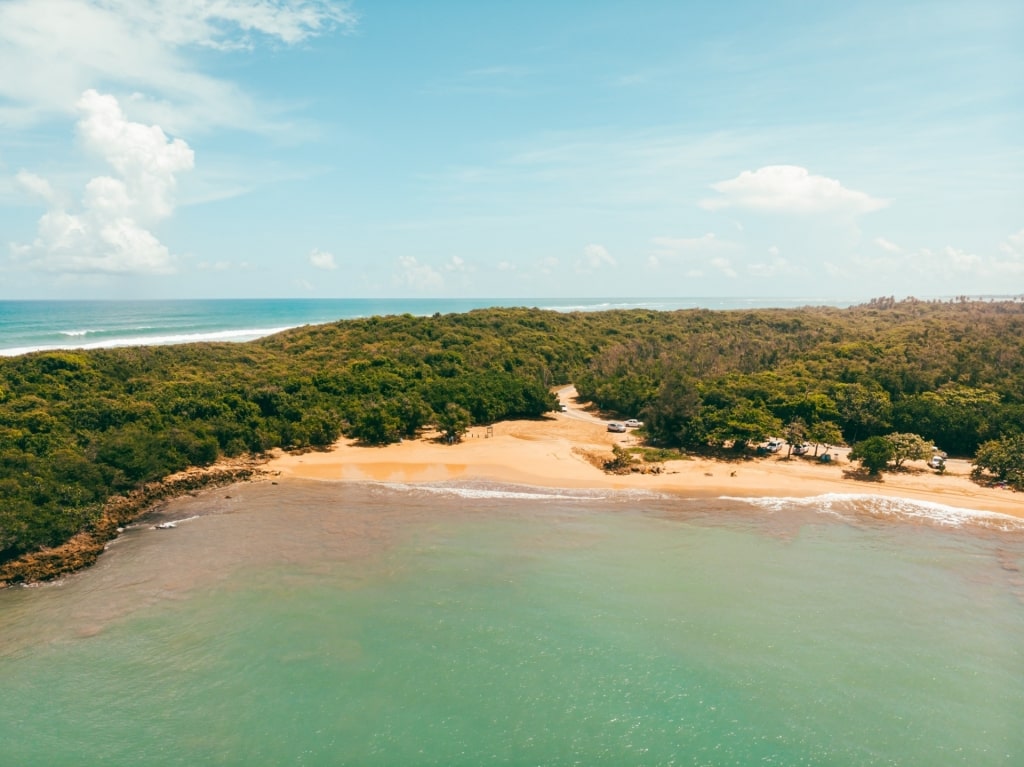
La Pared, Luquillo
Some 45 minutes’ drive east of San Juan, Playa La Pared (“The Wall”) is a reliable spot for beginners, with a clean beach break over a sandy bottom producing five-footers. It’s named for a sea wall, built to protect the shoreline, but now also a colorful canvas for artists.
This is a good place year-round to find beginner-friendly waves, peaking from autumn into winter. Surfing Puerto Rico here offers board rentals and surfing lessons.
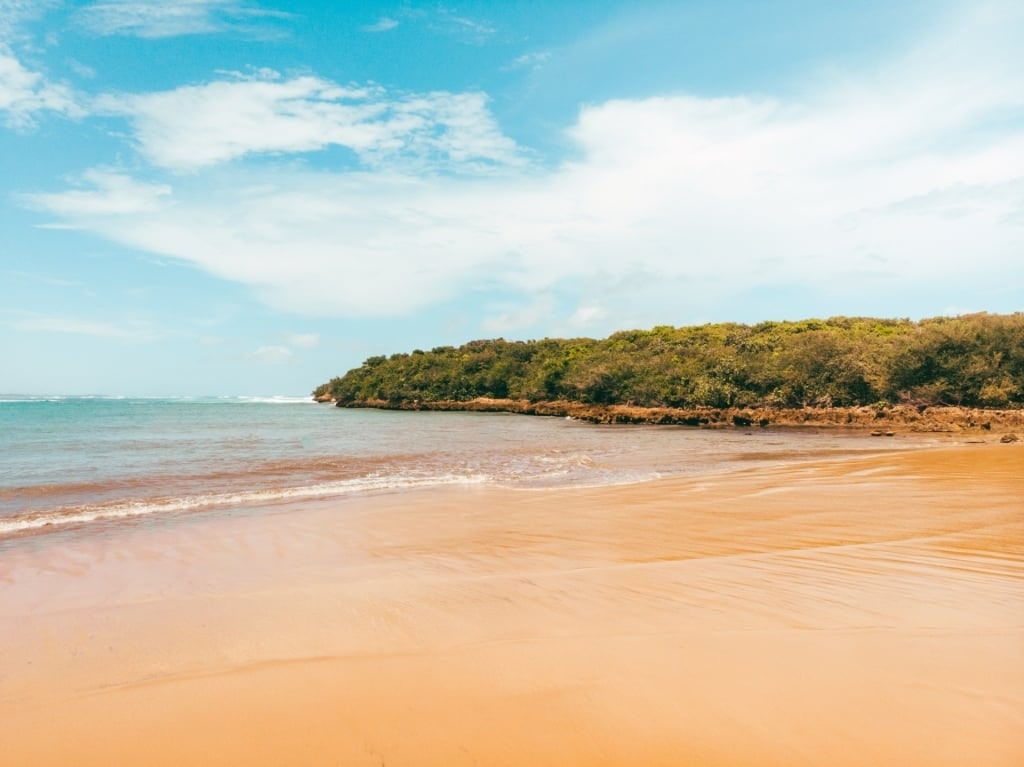
La Pared, Luquillo
Be careful of a rip tide, which can catch the unwary. There are usually plenty of sunbathers to ask for guidance—Luquillo is known as ”la Capital del Sol” for a reason.
A few steps from the sand is Boardriders Surf Bar & Grill. It’s famous with surfers (and everyone else) for its food, and Tuesday karaoke nights.
A 30-minute walk away are the Kiosks de Luquillo, fronting Luquillo Beach. These offer local street food, although quality can be variable, but the people-watching is always enjoyable.
Aviones Beach, San Juan
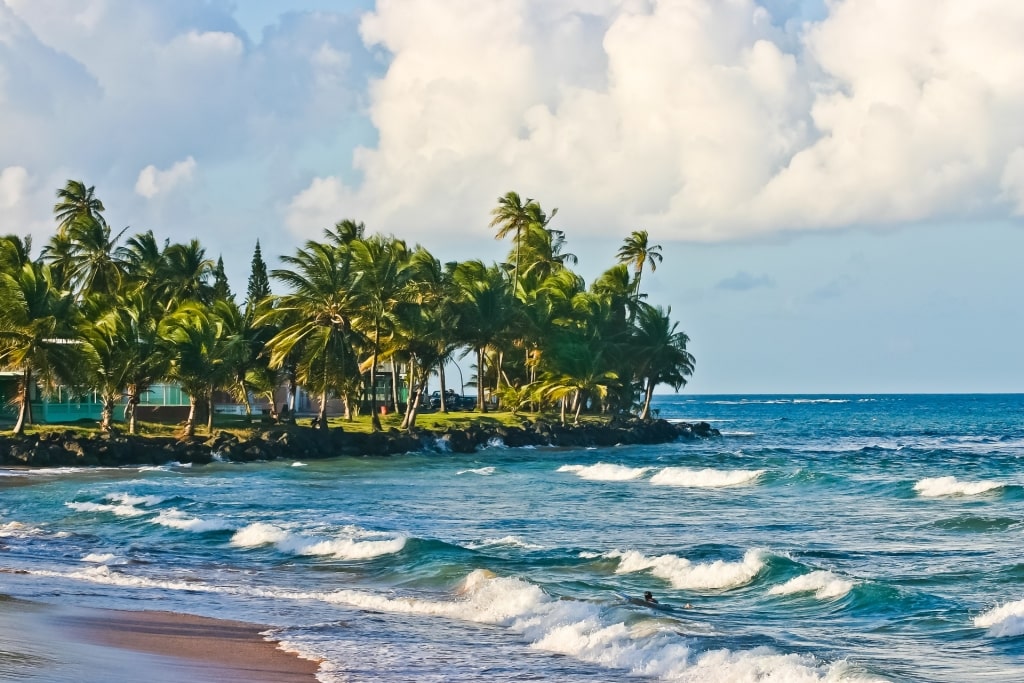
Aviones Beach, San Juan
Only a 20-minute drive from San Juan’s center, Aviones has a great beach break. Named after the nearby airport, it’s best suited to intermediate or experienced surfers because of shallow water across the reef.
The crowd of local surfers it attracts does make spectating a good option. There are several beach restaurants, and the very popular Kiosko El Boricua.
On calmer days, beginners can take advantage of the surf shops here to take lessons. Aviones is noted for its consistent waves, which make learning, or progressing, much easier.
The waves break both left, and right, which will help goofy-footers find their feet. As the beach is long, and wide, there is normally plenty of space on any line-up.

Bosque Estatal de Piñones, San Juan
Do bring bug repellent, as the national park behind the beach, while beautiful, buzzes with mosquitoes in the evening. Bosque Estatal de Piñones is a mangrove forest with a boardwalk for walking, and cycling.
Boca del Cibuco, Vega Baja
This is a pro-level beach on a small bay along Puerto Rico’s northern coast. Right on the edge of Reserva Natural Pantano Cibuco, it regularly hosts the Puerto Rico Triple Crown of Surfing & Bodyboarding.
There is a challenging surf break a long way out that you can ride into shore on a long right. These are powerful waves, coming out of deep water, so take local advice before going anywhere near them.
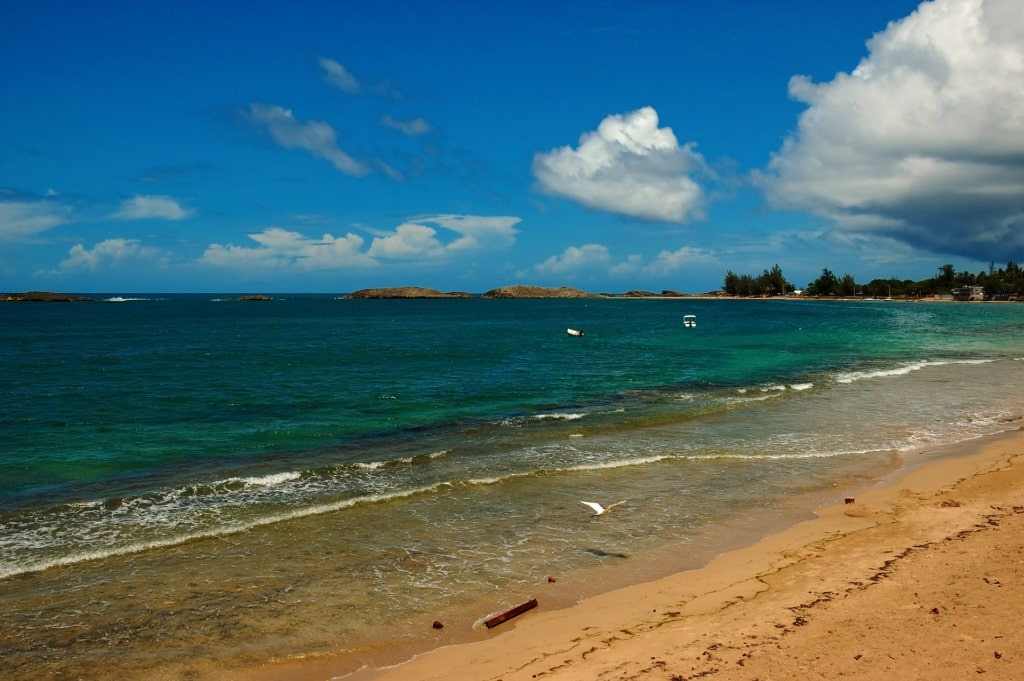
Playa de Vega, Vega Baja
Easier to reach—a short distance west—is the much larger Playa de Vega, where beginners can enjoy a more sedate experience. Stand-up paddle-boarders also have several good spots along this north-east-facing shoreline.
Reserva Natural Pantano Cibuco is a protected swampland area. It’s a secluded natural reserve where you can go bike-riding, hiking, or bird-watching.
Read: Best Hikes in Puerto Rico
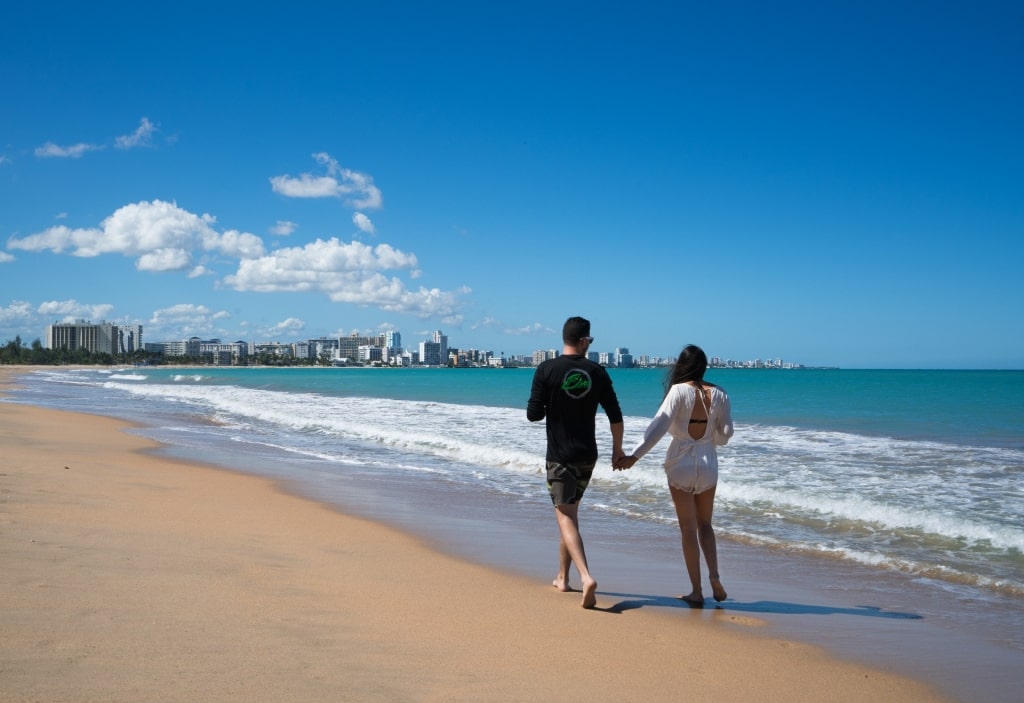
Isla Verde, San Juan
Has this list of the best surfing spots in Puerto Rico tempted you to break out your board shorts? Then browse our cruises to San Juan to find the perfect surf-inspired getaway.
